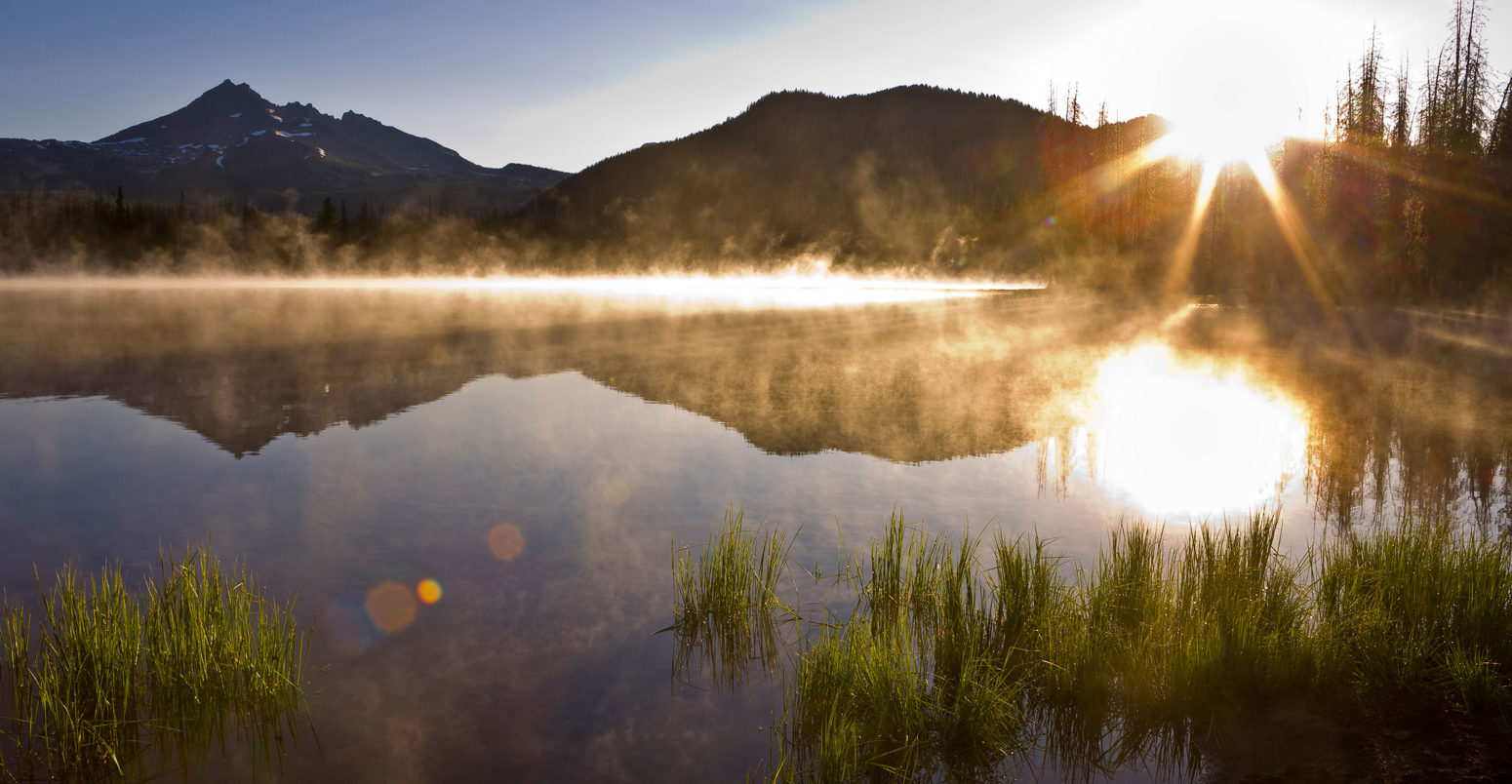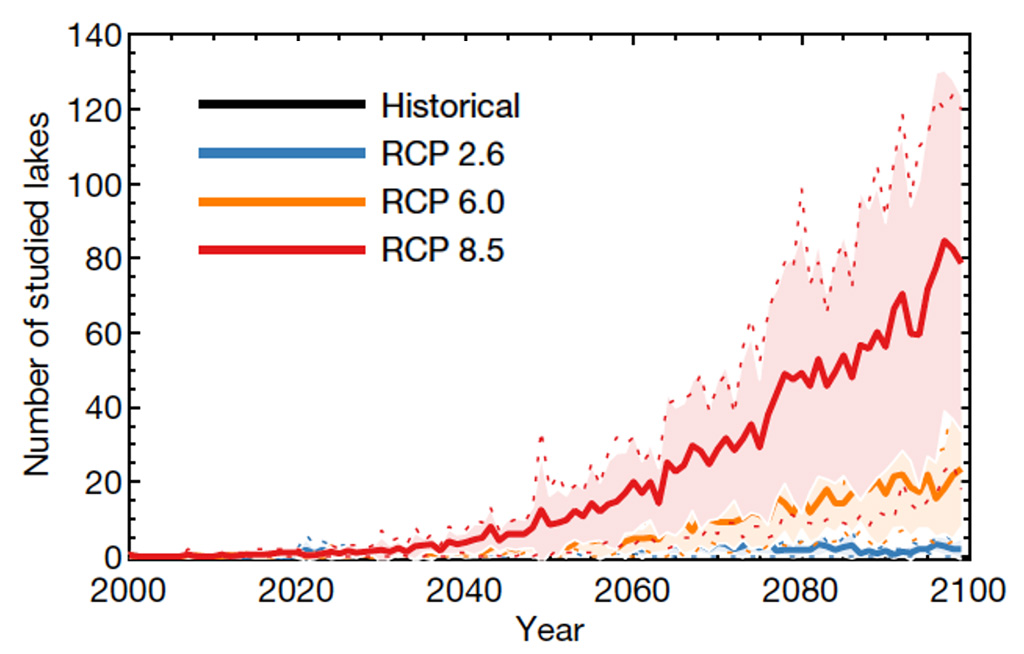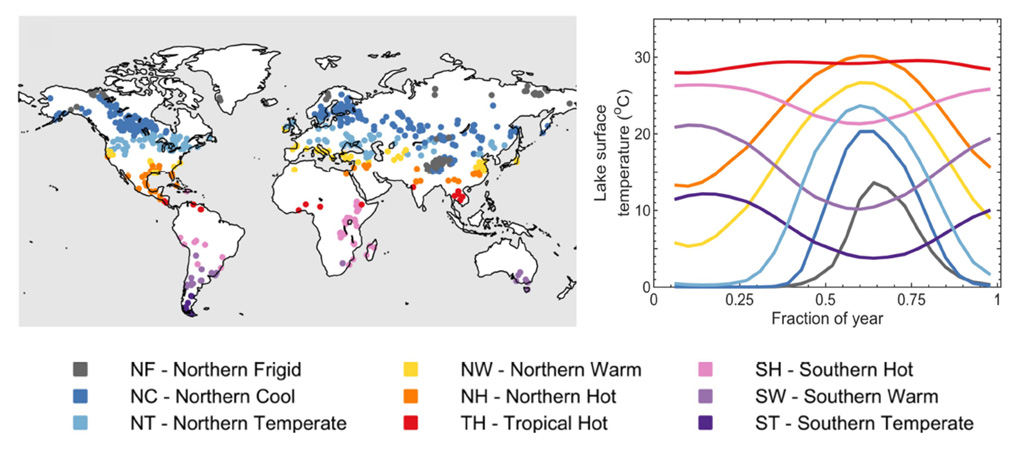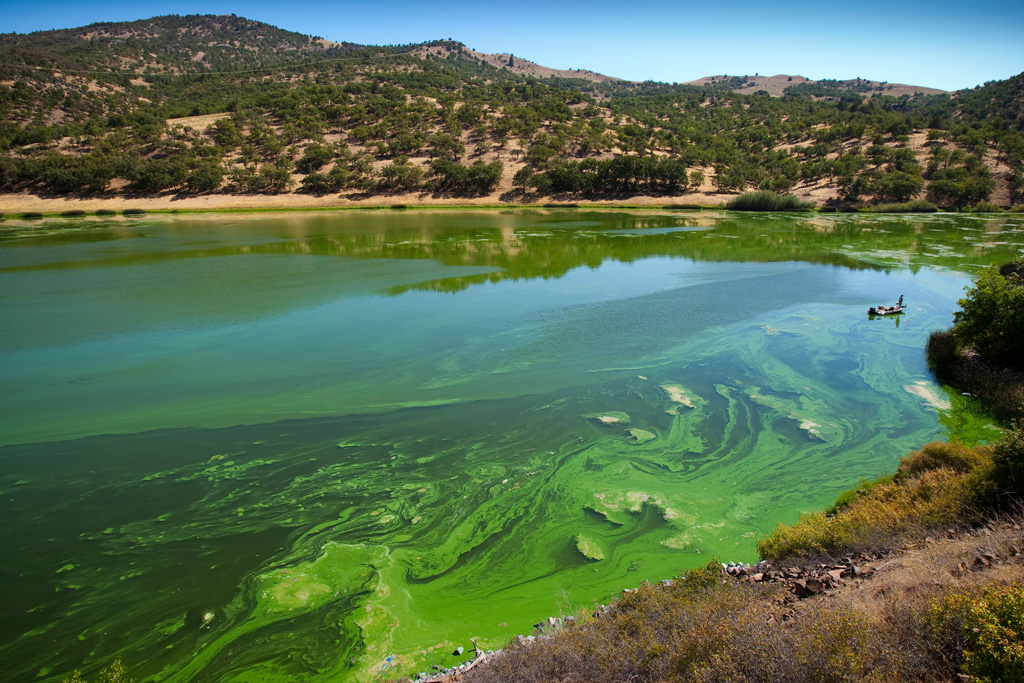
Lake heatwaves will be ‘hotter and longer’ by the end of the century
Ayesha Tandon
01.20.21Ayesha Tandon
20.01.2021 | 4:00pmClimate change is causing “lake heatwaves” to become more frequent, intense and long-lasting, a new study warns.
The research, published in Nature, finds that lake heatwaves could become between three and 12 times longer by the end of this century – and between 0.3C and 1.7C hotter.
The authors warn that, as lake temperatures increase, heatwaves of the past “will no longer be extreme and will become the new normal”. In some cases, even under a low-emissions scenario, there will be lakes that reach a “permanent heatwave state” by the end of the century.
The lead author tells Carbon Brief that he anticipates “catastrophic damage to some lake ecosystems, which may have irreversible impacts on ecological communities, as well as have a dramatic influence on local communities which depend on lakes for survival”.
What is a lake heatwave?
A “lake heatwave” is defined – in a similar way to marine heatwaves – as a period of at least five days with “extreme warm” surface water temperatures, the paper says. This threshold is defined as the 90th percentile – meaning that the temperature is exceeded just 10% of the time in the baseline climate. As the average climate differs between lakes, this threshold will be slightly different for each individual lake around the world.
Lake heatwaves are still a very new concept, lead author Dr Richard Woolway from the European Space Agency tells Carbon Brief:
“The main novelty of this work is that we introduce the concept of lake heatwaves…In this work, we show, for the first time, that heatwaves also frequently occur in lakes and that these are very sensitive to climatic variations.”
The new study determines the impact of climate change on heatwave intensity, frequency and duration for 702 lakes around the globe. It uses satellite observations and simulations from a freshwater lake model (pdf), driven by the four climate models, to simulate daily surface temperatures over the 20th and 21st centuries.
The table below shows the average intensity and duration of lake heatwaves at the end of the 20th century (1970-99) and projected for the end of the 21st century (2070-99). Two emissions scenarios are shown for the 21st century projections – the low emissions RCP2.6 scenario, and the very high emissions RCP8.5 scenario.
| 1970-1999 | 2070-2099 Low emission scenario | 2070-2099 High emissions scenario |
|
|---|---|---|---|
| Average heatwave intensity (C) | 3.7 | 4.0 | 5.4 |
| Average heatwave duration (days) | 7.7 | 27.0 | 95.5 |
The study also categorises lake heatwaves by intensity – as moderate, strong, severe or extreme. The plot below shows simulations of the total annual number of “heatwave days” for the four intensities – back to 1900 and out to 2100 under three different emission scenarios (this time including RCP6.0).

Global annual mean count of moderate, strong, severe, or extreme “heatwave days” simulated between 1900 and 2100 for RCP2.6, RCP6.0, and RCP8.5. Data from Woolway et al (2021). Chart by Carbon Brief using Highcharts.
Throughout the 20th century, there are an average of around 15 lake heatwave days per year across the world and most are classed as “moderate”. However, the total number of lake heatwave days increases significantly from the year 2000 in all three emission scenarios tested.
In the lowest emissions scenario, RCP2.6, there are just under 100 heatwave days per year by the end of the 21st century, divided fairly evenly between the four intensity categories. However, in the highest emissions scenario, RCP8.5, there are more than 200 heatwave days per year by the end of the 21st century, most of which are classed as “extreme”.
Permanent lake heatwaves
A lake enters a “permanent heatwave” state when its surface temperatures continuously exceed the threshold temperature for a full year. The plot below shows how many of the 702 lakes studied are expected to reach this state over the 21st century.
Historical data is shown in black, the low-emission scenario RCP2.6 is shown in blue, mid-emissions scenario RCP6.0 in orange and high-emissions scenario RCP8.5 in red.

Before the year 2000, none of the lakes studied reached a permanent heatwave state. However, by the end of the 21st century, even the lowest emission scenario RCP2.6 results in permanent heatwaves in some of the lakes studied.
In the highest emission scenario, 81 of the 702 lakes studied reach a permanent heatwave state by 2099. Dr Catherine O’Reilly, associate professor of geology at Illinois State University”, who was not involved in the study, tells Carbon Brief about the significance of this finding:
“I was also surprised – and a bit horrified – to see how many lakes will essentially be permanently in a ‘heatwave’ state. It’s hard to imagine that there won’t be substantial changes in lake environments under those conditions. It’s like we’ll be living on a different planet.”
The study also finds that surface heatwaves are longer-lasting and less intense in deep lakes – up to 60 metres deep – than in shallow lakes. This is because deeper lakes have a larger volume of water over which to distribute the heat, Woolway tells Carbon Brief:
“We call this thermal inertia: just as a heavy train takes longer to speed up and slow down than a lighter vehicle like a car, deep lakes heat up and cool down more slowly than shallow lakes. This makes heatwaves less intense, but longer lasting.”
O’Reilly comments that this thermal inertia could lead to significant environmental impacts – especially in deep lakes:
“One of the issues for lakes is that if a heatwave has a substantial effect, we don’t know how easy it will be for a lake to recover. Deeper lakes may struggle more to rebound – the authors point this out for temperature, but we will need to see if this is also the case for other aspects of the lake environment.”
Where are lake heatwaves most severe?
The 702 lakes used in this study can be divided into “thermal regions”, based on their seasonal patterns of surface temperature, the study says. For example, Lake Tana in Ethiopia – the source of the Blue Nile – is a low-altitude “Southern Hot” lake, while Loch Lomond in Scotland is a high-altitude “Northern Cool” lake.
The map on the left shows the lakes and their thermal region, whilst the plot on the right shows the yearly pattern of average lake surface temperatures for the nine thermal regions.

Lakes with high variability in their surface temperature are typically found at high-latitudes, whilst tropical lakes at lower latitudes have less variability. The study also finds that the high-latitude lakes typically see more intense lake heatwaves than low-latitude lakes.
As lake heatwaves become more intense and long-lasting, they are starting to occur at different times in the year. The paper explains that in a high-emissions scenario, “lake heatwaves will no longer be restricted to a single season but will extend across multiple seasons”.
Impacts of lake heatwaves
Lake heatwaves could reduce the number of individual species living in lakes – “in some cases critically” – Woolway tells Carbon Brief. He adds that thermal heatwaves “have already exposed aquatic organisms to novel and, in some cases, lethal conditions, leading to an increased risk of mass mortality events, such as fish die-offs”.
Furthermore, Woolway continues, lake heatwaves can increase blooms of algae, such as the “toxin-producing cyanobacteria”, which can “create a serious health threat for cattle, pets, and humans, as well influence the provision of safe water for drinking and irrigation”.

In fact, periods of extreme heat in lakes could have more severe ecological impacts than marine or land-based heatwaves, according to Dr Alistair Hobday, research director at the Commonwealth Scientific and Industrial Research Organisation (CSIRO) in Australia, who was not involved in the study. He tells Carbon Brief:
“In marine and terrestrial systems, many species that are stressed by heatwaves can move to cooler waters. In lakes, with hard boundaries, the only refuge is to move to deeper cooler waters…so expect ecological impacts of lake heatwaves to be more dramatic for biology than in the ocean.”
Aquatic organisms in regions that are already close to their maximum habitable temperatures will be especially affected by lake heatwaves, the paper says
Hobday notes that this research could be useful for lake managers to “plan responses to heatwaves”, but points out that in the long-term, “the only way to reduce the frequency, severity, and duration of heatwaves is to reduce warming”.
Dr Eleanor Jennings, a co-author on the study from the Dundalk Institute of Technology in Ireland, adds that knowledge about lake heatwaves by itself is “not enough” and that it must be unless it is translated into action:
“Knowing that very dramatic and extreme changes may occur is not enough. This knowledge must translate into individual and government actions if even some of the most extreme consequences for lakes, and the species that live there, are to be avoided.”
Woolway, R. L. et al. (2021) Lake heatwaves under climate change, Nature, doi:10.1038/s41586-020-03119-1
-
Lake heatwaves will be ‘hotter and longer’ by the end of the century
-
Lake heatwaves will be at least three times longer by end of century

